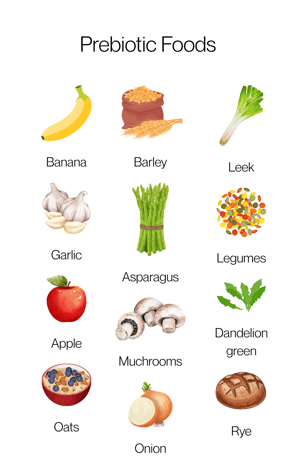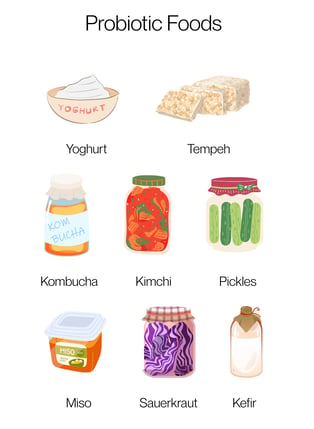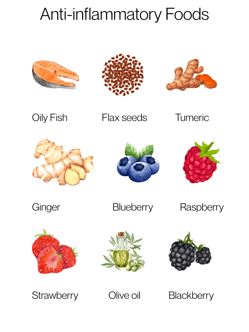Nourish to Heal: The Science-Backed Path to Clear Skin
Sara Klysing
5/10/20258 min read


The Power of Nourishment
You’ve tried the skincare routines, eliminated gluten, dairy, and sugar, spent a fortune on topical treatments—and your skin still isn’t clear.
But what if the real secret to healthy, glowing skin isn’t about what you remove—but what you add?
Acne can feel like a never-ending battle. But what if clear skin isn’t about scrubbing harder or restricting more, but about restoring balance inside your body?
Emerging research shows that acne is often a reflection of what’s going on internally—
your hormones
your gut
your blood sugar
your inflammation levels
When these systems are out of sync, it shows up on your skin.
This blog post will explore the science-backed connection between nourishment and acne, and how supporting your body with the right foods and habits can help you achieve clear, healthy skin naturally—without extreme diets, removing food groups, or expensive products.
The Root Causes of Acne
Most conventional acne treatments focus on topical solutions. While these can help manage surface-level symptoms, they often fail to address the deeper internal imbalances that cause persistent acne in the first place.
Scientific evidence continues to highlight six major internal triggers of acne:
Blood sugar instability
Hormonal imbalance
Gut dysbiosis
Chronic stress
Systemic inflammation
Topical misuse
Understanding and addressing these root causes holistically is essential to truly heal your skin from within.
How Blood Sugar Affects Acne
Blood sugar instability is a key driver of hormonal acne. Consuming high-glycaemic foods—such as white bread, sweets, and soft drinks—leads to a spike in insulin. This increase in insulin promotes higher levels of androgens and insulin-like growth factor 1 (IGF-1), both of which stimulate excess oil production and clog pores (Gruszczyńska et al., 2023).
However, this doesn’t mean you have to eliminate all sweet treats from your diet. Enjoying sweets after a balanced meal that includes protein, healthy fats, and fibre can help slow glucose absorption and minimise insulin spikes. This approach aligns with Jessie Inchauspé’s recommendations in her book Glucose Revolution, where she emphasises that the order in which we consume foods can significantly impact blood sugar levels (Inchauspé, n.d.).
By focusing on whole foods that stabilise blood sugar—such as lean proteins, fibre-rich vegetables, legumes, and healthy fats—you can reduce insulin surges and the hormonal domino effect that follows (American Academy of Dermatology, 2023).
It’s not about perfection, but about giving your body the steady nourishment it needs to thrive—and letting your skin reflect that inner balance.
The Gut-Skin Connection
The gut and skin are connected via what’s known as the gut-skin axis. An imbalanced gut microbiome (dysbiosis) can lead to systemic inflammation and impair the body’s ability to detoxify and regulate immunity—factors that can all contribute to acne (Doheny, 2023).
A diet rich in probiotic and prebiotic foods supports healthy gut flora. Probiotic-rich foods like kefir, yoghurt, kombucha, and kimchi help populate the gut with beneficial bacteria. Prebiotics, like garlic, onions, and bananas, feed those bacteria and help them flourish (De Pessemier et al., 2021).
Hormonal Imbalance and Nutrition
Hormonal fluctuations—particularly elevated androgens like testosterone—are a common driver of adult acne, especially along the jawline and chin. These imbalances are often influenced by spikes in insulin, which can result from diets high in refined carbohydrates and sugar. As discussed earlier, these insulin surges stimulate the production of androgens, leading to increased oil production and breakouts (Meixiong et al., 2022).
Balancing these hormones doesn’t require extreme diets or synthetic fixes. Nutrition is a powerful tool. A blood sugar-stabilising diet rich in whole foods—such as omega-3 fatty acids (found in flaxseeds, walnuts, and fatty fish), lean proteins, complex carbohydrates (like sweet potato and quinoa), and a colourful variety of vegetables—can help reduce insulin spikes and promote hormone harmony (American Academy of Dermatology, 2023). Fibre also plays a key role by helping the body excrete excess hormones through digestion.
You can also support androgen balance with specific lifestyle practices and natural remedies. Regular movement, stress reduction, and adequate sleep all help regulate cortisol and insulin—two hormones that influence androgen activity.
Healing Teas
Certain teas have shown promise in supporting hormone balance and reducing acne:
Spearmint tea: May help lower free testosterone levels in women, particularly those with PCOS, and reduce breakouts over time (Doheny, 2023).
Green tea: Rich in antioxidants like EGCG, which may help reduce sebum production and support blood sugar regulation (Meixiong et al., 2022).
Licorice root tea: Traditionally used to support adrenal function and reduce excess androgens—though it should be used cautiously in pregnancy or by those with high blood pressure (Salem et al., 2018).
Cinnamon tea: May help regulate blood sugar levels and improve insulin sensitivity, supporting hormone balance (Gruszczyńska et al., 2023).
Dandelion tea: Known for its liver-supporting properties, dandelion tea may aid in detoxification and hormone metabolism. Since the liver plays a crucial role in breaking down excess hormones (like oestrogen and androgens), supporting liver function with herbs like dandelion can indirectly help balance hormones and reduce acne flare-ups. It also has mild diuretic effects, which may help reduce puffiness and inflammation (Salem et al., 2018).
Consistency is key—natural remedies work best when they’re part of an ongoing, nourishing routine rather than a quick fix.
Inflammation: The Silent Aggravator
Chronic inflammation creates an environment where acne can thrive. It’s triggered by stress, poor sleep, processed foods, gut imbalance, and more. This inflammation slows down healing, worsens redness, and makes your skin more reactive.
Anti-inflammatory foods—like oily fish, flaxseeds, turmeric, berries, and olive oil—can help reduce this internal fire and support clearer skin (Johns Hopkins Medicine, n.d.).
Why Restriction Backfires
It’s tempting to go all-in on elimination: cutting out dairy, sugar, gluten, soy, and everything in between. But overly restrictive diets can backfire in ways that many people don’t expect. When you drastically limit your food intake, you risk missing out on essential nutrients like zinc, omega-3s, B vitamins, and antioxidants—all of which play critical roles in skin health, hormone balance, and immune function. Without these nutrients, your body may struggle to regulate oil production, fight inflammation, or maintain a healthy gut—all key factors in acne.
Moreover, restrictive eating can place the body under stress. Chronic stress (even from dieting) raises cortisol levels, which can trigger more oil production and inflammation, worsening breakouts. It can also disrupt your gut microbiome, leading to imbalances that have been linked to acne through the gut-skin axis. Restriction may also lead to bingeing or disordered eating patterns, both of which can throw off hormone regulation and blood sugar stability—another acne trigger.
True healing isn’t about punishment. It’s about nourishment—giving your body what it needs to function optimally, including enough energy, vitamins, and minerals to balance hormones, support digestion, and regulate inflammation (Therese, 2025).
Foods to Focus On
Rather than obsessing over what to cut, focus on what to add. Nutrient-dense foods are the foundation of glowing skin:
Probiotic foods: Yoghurt, kefir, kombucha, sauerkraut
Prebiotic foods: Garlic, onions, leeks, bananas, asparagus
Blood sugar balancing foods: Eggs, lentils, leafy greens, avocado, chicken, beef
Anti-inflammatory foods: Salmon, flaxseeds, blueberries, olive oil, turmeric
This approach supports every system involved in skin health—your gut, hormones, immune response, and inflammation levels.
Clear Skin Nourishment Checklist
✓ Eat a variety of whole, colourful, nutrient-rich foods daily
✓ Include probiotic and prebiotic foods regularly
✓ Balance meals with protein, healthy fat, and fibre
✓ Enjoy anti-inflammatory teas like spearmint and green tea
✓ Move your body and manage stress
✓ Prioritise sleep and rest
Nourishment Over Neglect: A Clear Skin Philosophy
Jill Therese, the founder of The Clear Code, is a strong advocate for this nourishment-based approach. Her philosophy is grounded in science and personal experience: that skin issues like acne are not about surface-level imperfections but signals of deeper imbalance. Instead of shaming your skin into submission with endless restrictions, her method promotes giving your body the support it needs to thrive.
Her results—and those of her clients—speak volumes. By focusing on internal healing and sustainable habits, this philosophy empowers individuals to nourish their way to clear skin. It’s a method rooted in education, compassion, and balance—one that aligns with what the latest research confirms.
Nourish to Heal: 3 Habits to Start Today
Clear skin is not about restriction, obsession, or a never-ending search for the perfect product. It’s about giving your body what it needs to thrive—inside and out.
Backed by science, a nourishing, balanced, whole-food diet can regulate your blood sugar, heal your gut, reduce inflammation, and support healthy hormones. The result? Radiant skin that reflects the health and balance you’re cultivating within.
Here are three habits you can start today:
Begin each meal with vegetables or fibre to steady blood sugar.
Sip one hormone-supportive tea daily (like spearmint, cinnamon, or green tea).
Add one probiotic and one anti-inflammatory food to your day.
Of course, everyone’s body is different. If you have a genuine allergy or intolerance—whether it’s to dairy, gluten, soy, or something else—then avoiding that trigger is an important part of your unique healing process. But that’s not the same as cutting out entire food groups just because it worked for someone else.
True skin healing starts with self-respect and a commitment to feed your body what it needs—not punish it for breaking out. Choose nourishment, and your skin will thank you.
References
American Academy of Dermatology (2023) How your diet could affect your acne, [online] Available at: https://www.aad.org [Accessed 10 May 2025].
Inchauspé, J. (n.d.). The 10 Glucose Goddess Hacks. Glucose Goddess. Available at: https://www.glucosegoddess.com/pages/science-episode-the-10-glucose-goddess-hacks [Accessed 11 May 2025].
Johns Hopkins Medicine (n.d.) Anti-Inflammatory Diet. Available at: https://www.hopkinsmedicine.org/health/wellness-and-prevention/anti-inflammatory-diet (Accessed: 10 May 2025).
Morales-Brown, P. (2023). Hormonal acne: Causes and treatment. Medical News Today. Available at: https://www.medicalnewstoday.com/articles/313084#hormonal-therapy (Accessed: 10 May 2025).
Meixiong, J., Ricco, C., Vasavda, C., & Ho, B.K. (2022). Diet and acne: A systematic review. JAAD International, 7, 95–112. Available at: https://pmc.ncbi.nlm.nih.gov/articles/PMC8971946/ (Accessed: 10 May 2025).
Doheny, K. (2023) ‘Probiotics for adult acne’, MedCentral, 3 October. Available at: https://www.medcentral.com/dermatology/probiotics-for-adult-acne (Accessed: 10 May 2025).
De Pessemier, B., Grine, L., Debaere, M., Maes, A., Paetzold, B. and Callewaert, C., 2021. Gut–Skin Axis: Current Knowledge of the Interrelationship between Microbial Dysbiosis and Skin Conditions. Microorganisms, 9(2), p.353. Available at: https://www.mdpi.com/2076-2607/9/2/353 [Accessed 10 May 2025].
Gruszczyńska, M., Sadowska-Przytocka, A., Szybiak, W., Więckowska, B. and Lacka, K., 2023. Insulin resistance in patients with acne vulgaris. Biomedicines, 11(8), p.2294. Available at: https://www.mdpi.com/2227-9059/11/8/2294 [Accessed 10 May 2025].
Jimenez-Sanchez, M., Celiberto, L.S., Yang, H., Sham, H.P. and Vallance, B.A., 2025. The gut-skin axis: a bi-directional, microbiota-driven relationship with therapeutic potential. Gut Microbes, 16(1), pp.1-18. Available at: https://doi.org/10.1080/19490976.2025.2473524 [Accessed 10 May 2025].
Salem, I., Ramser, A., Isham, N. and Ghannoum, M.A., 2018. The gut microbiome as a major regulator of the gut-skin axis. Frontiers in Microbiology, 9, p.1459. Available at: https://www.frontiersin.org/articles/10.3389/fmicb.2018.01459/full [Accessed 10 May 2025].
Therese, J. (2025). Jill Therese – A natural lifestyle-based approach to clear skin. Available at: https://www.jilltherese.com/ (Accessed: 10 May 2025)
Kay, S. (n.d.) The Best Prebiotic Foods for Gut Health, Kay Nutrition. Available at: https://kaynutrition.com/prebiotic-foods/ (Accessed: 10 May 2025).
















